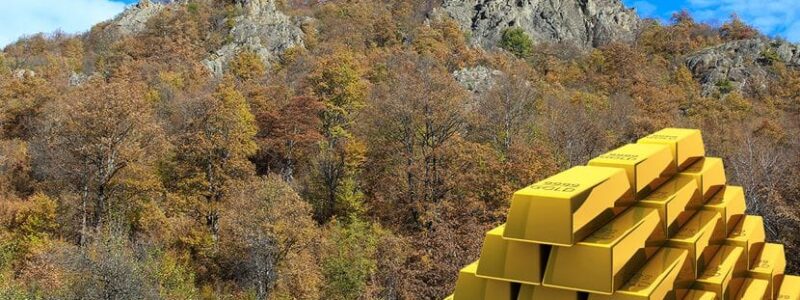
According to Serbian Economist, Australian company Strickland Metals reported the discovery of rich gold-copper ores in the Šanac area of the Rogozna project in southern Serbia, potentially making this cluster one of the largest gold projects in the Balkans. The news was reported earlier by Australian business media.
According to the company, new drill results from the Šanac prospect indicate strong intervals of continuous gold and copper mineralization. The site is estimated to have a resource of about 165 tons of gold equivalent, and the combined potential of the entire Rogozna project is about 230 tons AuEq. A series of recent holes have shown extended intervals with gold grades well above initial expectations, including tens of meters of high grams-per-tonne equivalent.
A total of seven drill rigs are now active at Rogozna, including three at the equally prospective Gradina prospect, where over 700 meters of continuous gold and zinc mineralization was previously reported.
The Rogozna project is located in the Novi Pazar area, within the Tetian metallogenic belt, which hosts a number of large copper-gold deposits. According to Strickland’s corporate materials, the licensed area covers approximately 184 square kilometers and includes four exploration licenses; the resource is already estimated at millions of ounces of gold equivalent, placing Rogozna among the largest undeveloped gold projects in Europe.
Gold in the Serbian economy: production and reserves are growing
Serbia has been rapidly strengthening its position on the map of European gold mining in recent years. According to international statistical resources, the country’s gold production in 2023 was about 7 tons (7,000 kg), slightly lower than the record 7.29 tons in 2022, but many times higher than the average figures of the early 2000s.
The key industrial player is China’s Zijin Mining, which owns the Serbia Zijin Bor Copper complex and the Čukaru Peki deposit. In 2024, these assets jointly produced about 8 tons of gold as part of copper-gold mining, ensuring Serbia’s status as one of the fastest growing gold mining centers in the region.
In parallel, the National Bank of Serbia is actively building up its gold reserve. According to TradingEconomics and specialized industry surveys, the volume of the country’s official gold reserves has grown to 51 tons in the second-third quarter of 2025, compared to the average of 20-21 tons in the early 2000s.
Gold now accounts for about 17-18% of foreign exchange reserves, and Belgrade has been consistently repatriating the metal from foreign vaults back to the country.
Against the backdrop of growing production and increasing gold reserves, the Rogozna discoveries reinforce Serbia’s role as a promising hub for gold and base metals in Southeast Europe.
As the Rogozna resource base is refined and subsequent feasibility studies are conducted, the project could become one of the key arguments for further strengthening Serbia’s gold balance, but its realization, according to analysts, will require strict adherence to environmental standards and transparent agreements between investors, the state and local communities.